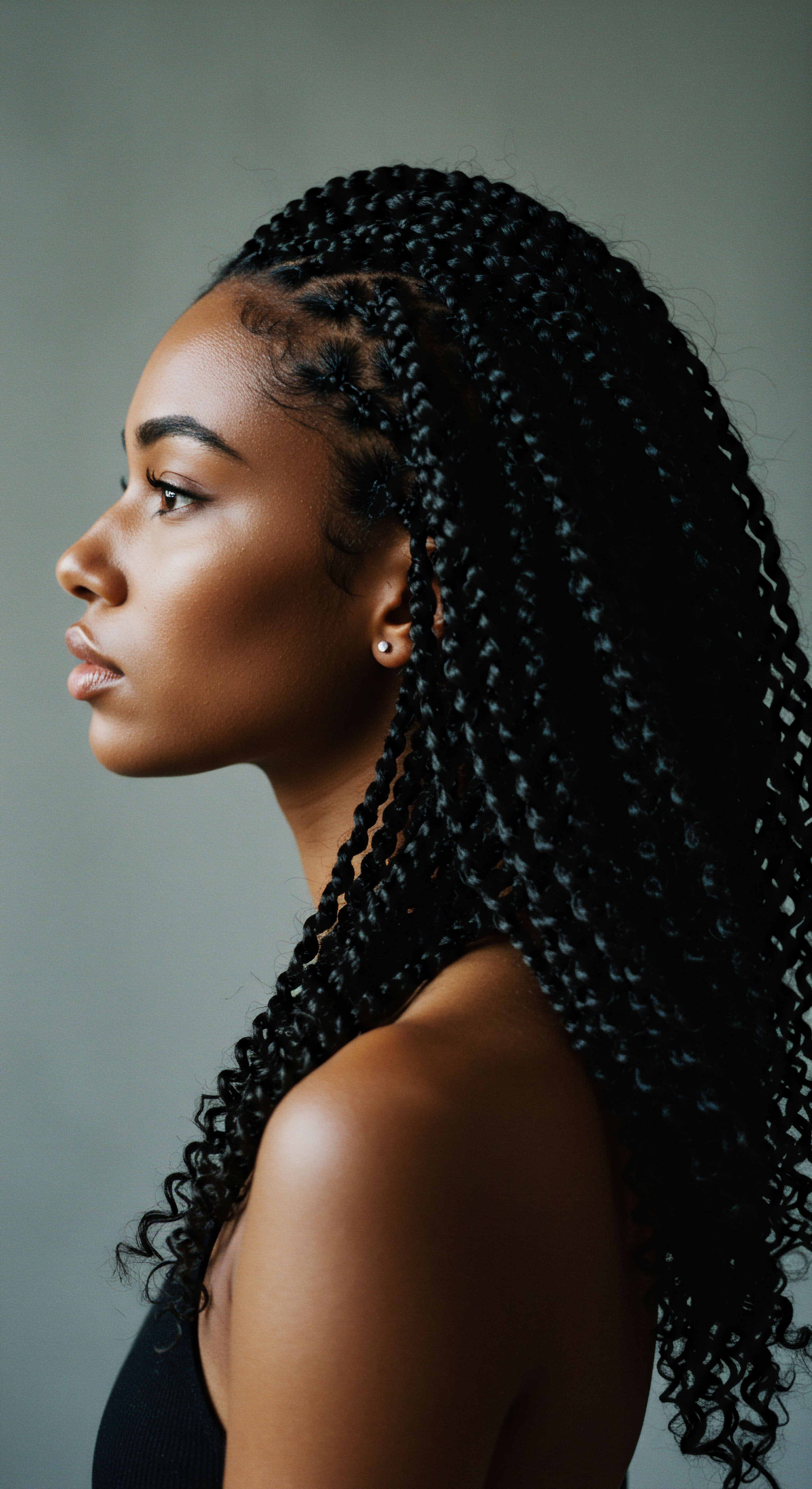
Roots
The whisper of ancient winds across the sands of time often carries secrets, particularly those concerning the intimate rituals of daily life. When we consider the common hair products of ancient Egypt, our minds might first conjure images of regal wigs and dark, captivating kohl. Yet, beneath the surface of such grandeur lies a profound connection to the earth, a deep understanding of natural elements, and a persistent human desire for well-being and adornment.
This journey into the hair care practices of a civilization that thrived millennia ago reveals not just a list of ingredients, but a thoughtful engagement with the body’s presentation, often linked to spiritual and social standing. The ancient Egyptians, in their wisdom, sought not merely superficial beauty, but a robust vitality for their strands, a reflection of inner harmony.
For these resourceful people, the desert environment itself dictated many aspects of personal care. The intense sun, the pervasive dust, and the dry air necessitated preparations that protected, soothed, and maintained the hair’s condition. Their approach was inherently holistic, recognizing that external application could offer both aesthetic appeal and practical benefits.
They looked to the plants that grew along the Nile, the fats from animals, and the minerals found within their rich landscape to formulate their solutions. This foundational knowledge, passed down through generations, shaped a sophisticated understanding of hair’s needs, far beyond what might initially be assumed for such an early period in human history.
Ancient Egyptian hair care practices extended beyond mere aesthetics, deeply integrating natural resources for both protection and vitality.
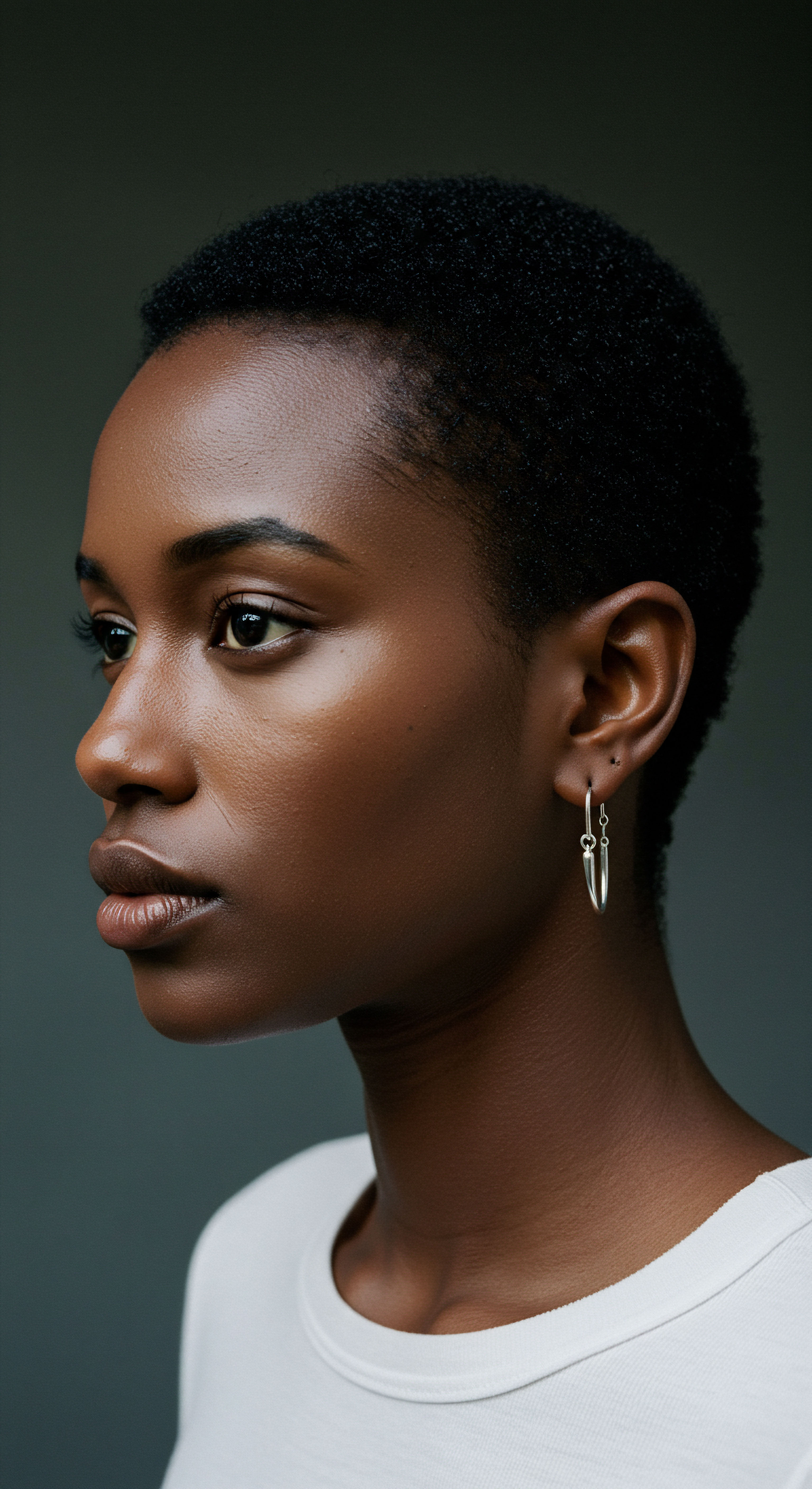
What Did the Nile Offer for Hair?
The fertile banks of the Nile River were a generous source of botanical ingredients that found their way into ancient Egyptian hair care. Vegetable oils formed a cornerstone of their regimen, offering conditioning and protective qualities. Castor Oil, derived from the castor bean plant, was a known component, likely valued for its ability to lubricate the hair shaft and impart a certain sheen.
Similarly, Moringa Oil, pressed from the seeds of the moringa tree, provided a light yet nourishing substance. Its stability in the warm climate would have made it a particularly useful choice for long-term preservation of hair and wigs.
- Almond Oil ❉ A light, emollient oil likely used for its softening properties and pleasant scent.
- Sesame Oil ❉ Another plant-derived oil, potentially offering similar conditioning and protective benefits against environmental harshness.
- Olive Oil ❉ While perhaps less prevalent than other oils in the earliest periods, olive oil, known for its conditioning properties, was also utilized.
These botanical extracts were not just about softening hair; they were also vital for keeping the scalp healthy in a dry climate. The Egyptians understood the need for moisture, and these oils provided a natural barrier against dehydration. They also used various resins and plant extracts for their aromatic qualities, ensuring that hair not only felt good but also carried a pleasant fragrance, an important aspect of personal presentation in their society.

Animal Fats and Beeswax in Hair Care
Beyond plant derivatives, animal fats played a substantial, if less often discussed, role in ancient Egyptian hair products. These fats, often rendered from oxen or hippopotamuses, provided a heavy, occlusive base for many preparations. Their density made them excellent for sealing in moisture and creating a strong hold for elaborate hairstyles and wigs. The practical application of such substances suggests a keen awareness of hair’s physical properties and how to manipulate them.
Beeswax, a versatile gift from nature, also saw extensive use. Its sticky, pliable nature made it an ideal binder and styling agent. It could help set curls, smooth down flyaways, and provide a lasting hold for intricate braided styles.
For wigs, which were a significant part of ancient Egyptian fashion and hygiene, beeswax was particularly indispensable, helping to secure individual strands to the wig’s foundation and maintain its shape through repeated wearings. The combination of these natural fats and waxes allowed for a surprising degree of control and artistry in ancient Egyptian hairstyling.

Ritual
Stepping from the foundational elements to their practical application, we begin to appreciate the daily and ceremonial rhythms that shaped ancient Egyptian hair care. This was not merely about applying a substance; it was a series of deliberate actions, a ritual that reflected personal values and societal norms. The creation and use of these products were integrated into the broader tapestry of life, serving purposes both mundane and sacred. Understanding these practices helps us to see the products not as isolated items, but as active participants in a culture that valued order, cleanliness, and symbolic meaning.

How Were Hair Products Applied and Used?
The application of ancient Egyptian hair products often involved a methodical approach. Oils and fats were likely warmed slightly to facilitate easier distribution through the hair. Combs, often crafted from ivory or wood, would have been essential tools for spreading these preparations evenly, ensuring that every strand received its measure of conditioning and protection. These combs, some of which survive today, reveal a dedication to detail in personal grooming.
For cleansing, the Egyptians used substances that could absorb impurities. Natron, a naturally occurring mineral salt, was sometimes dissolved in water to create a mild cleansing solution, capable of refreshing the hair and scalp without stripping it harshly. This reflects an intuitive understanding of gentle purification, seeking balance rather than aggressive removal. After cleansing, the conditioning power of oils and fats would be reapplied, restoring suppleness to the hair.
Ancient Egyptian hair care was a meticulous process, employing natural ingredients and tools to maintain both aesthetic appeal and physical well-being.
Styling was a significant part of the ritual, especially for the elite. Hair, whether natural or part of an elaborate wig, was often braided, curled, or sculpted into precise forms. The fatty and waxy preparations served as holding agents, akin to modern styling gels or pomades, ensuring that these complex arrangements remained intact for extended periods. This longevity was crucial, given the effort involved in creating such styles.

Did Ancient Egyptians Use Hair Dyes?
The question of hair color alteration in ancient Egypt reveals another fascinating dimension of their hair care practices. While many depictions show dark hair, the use of natural dyes was certainly present. Henna, derived from the Lawsonia inermis plant, stands as a prime example. This reddish-brown dye was not only used for coloring hair but also for tinting nails and skin.
Its application to hair would have imparted a rich, warm hue, and perhaps more importantly, acted as a natural conditioner, strengthening the hair shaft. Scientific studies suggest that henna was used to conceal gray hair as early as 3400 BC.
The Egyptians’ choice of henna speaks to a preference for natural solutions that offered multiple benefits. It wasn’t just about changing color; it was about enhancing the hair’s overall health and appearance. The use of henna also points to a cultural appreciation for certain shades, with red or auburn tones occasionally seen in depictions and even on some mummified remains, such as the wife of King Tutankhamun.
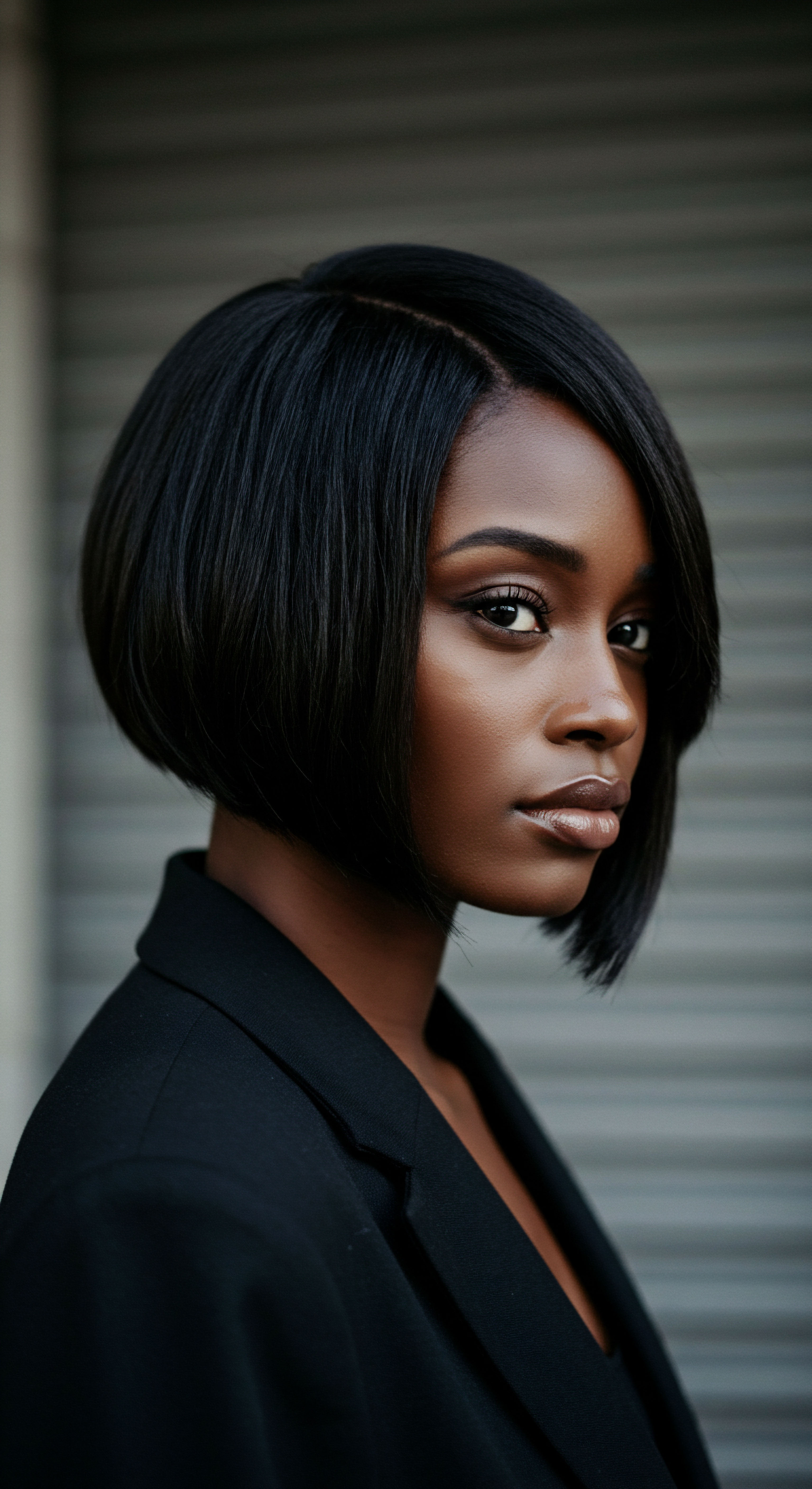
What Was the Role of Wigs in Daily Hair Rituals?
Wigs held an unparalleled position in ancient Egyptian society, transcending mere fashion to become symbols of status, hygiene, and even protection. Crafted with remarkable skill, these hairpieces allowed for elaborate styles that might be difficult to maintain with natural hair alone, especially in the arid climate. The finest wigs were made from human hair, meticulously braided and secured, while more accessible versions incorporated plant fibers or even sheep’s wool.
The creation of these wigs involved the application of products similar to those used on natural hair. Wigmakers often coated the hair with a mix of resin and beeswax, making it more pliable for styling and helping to set the intricate braids and curls. These heavy, often scented, wigs also offered a practical benefit ❉ they provided a layer of protection from the intense sun and, surprisingly, helped deter lice infestations by providing a removable, treatable barrier. When wigs became infested, they could be removed and boiled, a far simpler solution than treating natural hair.
| Ingredient Animal Fats (e.g. Ox, Hippopotamus) |
| Source Animal origin |
| Primary Function Styling hold, conditioning, protection |
| Ingredient Beeswax |
| Source Insect origin |
| Primary Function Styling hold, binder for wigs, conditioning |
| Ingredient Castor Oil |
| Source Plant (Castor bean) |
| Primary Function Conditioning, lubrication, sheen |
| Ingredient Henna |
| Source Plant (Lawsonia inermis) |
| Primary Function Hair dye (reddish-brown), conditioning |
| Ingredient Moringa Oil |
| Source Plant (Moringa tree) |
| Primary Function Light conditioning, protection |
| Ingredient Natron |
| Source Mineral salt |
| Primary Function Cleansing agent |

Relay
To truly comprehend the hair products of ancient Egypt, we must extend our inquiry beyond simple lists of ingredients and delve into the intricate interplay of science, culture, and social expression. This was a society where personal appearance was not a superficial concern but a reflection of order, health, and one’s place within the cosmos. The preparations they used were not merely cosmetic; they embodied a sophisticated, if empirical, understanding of material properties and their effects on the human form. Examining this through a multi-dimensional lens allows us to appreciate the depth of their innovation and the cultural weight placed upon every strand.
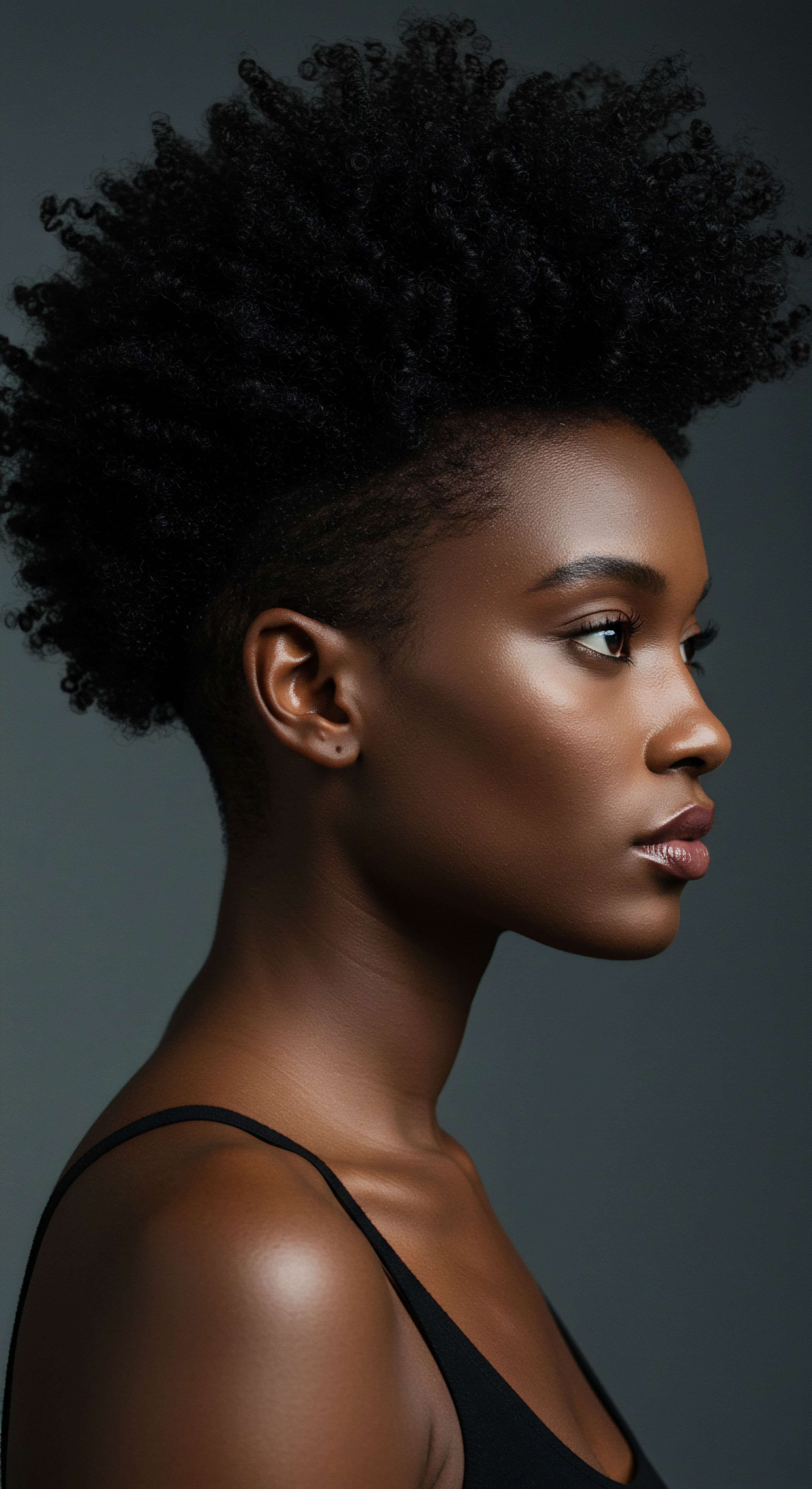
What Did Scientific Analysis Reveal About Ancient Hair Products?
Modern scientific investigations have shed remarkable light on the precise chemical composition of ancient Egyptian hair preparations, moving beyond historical texts and artistic depictions to reveal tangible evidence. A significant study by Natalie McCreesh, A. P. Gize, and A.
R. David, published in the Journal of Archaeological Science in 2011, provided compelling insights. Their research involved the analysis of hair samples taken from 18 mummies, some preserved through artificial mummification and others naturally preserved by the dry desert sands.
Through advanced techniques such as gas chromatography–mass spectrometry, the researchers discovered that nine of these mummies had hair coated in a distinctive fat-like substance. This coating contained biological Long-Chain Fatty Acids, including palmitic acid and stearic acid. The crucial finding was that this fatty material was present on both artificially and naturally mummified hair, suggesting it was not solely a part of the embalming process.
Instead, the scientists concluded it served as a styling product, akin to a modern hair gel or fixative, used during life to maintain hairstyles. This evidence points to a conscious effort by ancient Egyptians, across social strata and preservation methods, to preserve their chosen hairstyles, even into the afterlife, underscoring the enduring significance of hair presentation.
Chemical analysis of ancient Egyptian mummified hair reveals a sophisticated use of fat-based products for styling and preservation, extending beyond mere embalming.
This scientific validation provides a tangible link to their practices, confirming that these ancient people possessed practical chemical knowledge to create effective styling agents. The presence of these specific fatty acids suggests the use of animal fats or certain plant oils that are rich in such compounds. The ability to maintain elaborate coiffures through millennia speaks volumes about the efficacy of these ancient formulations.
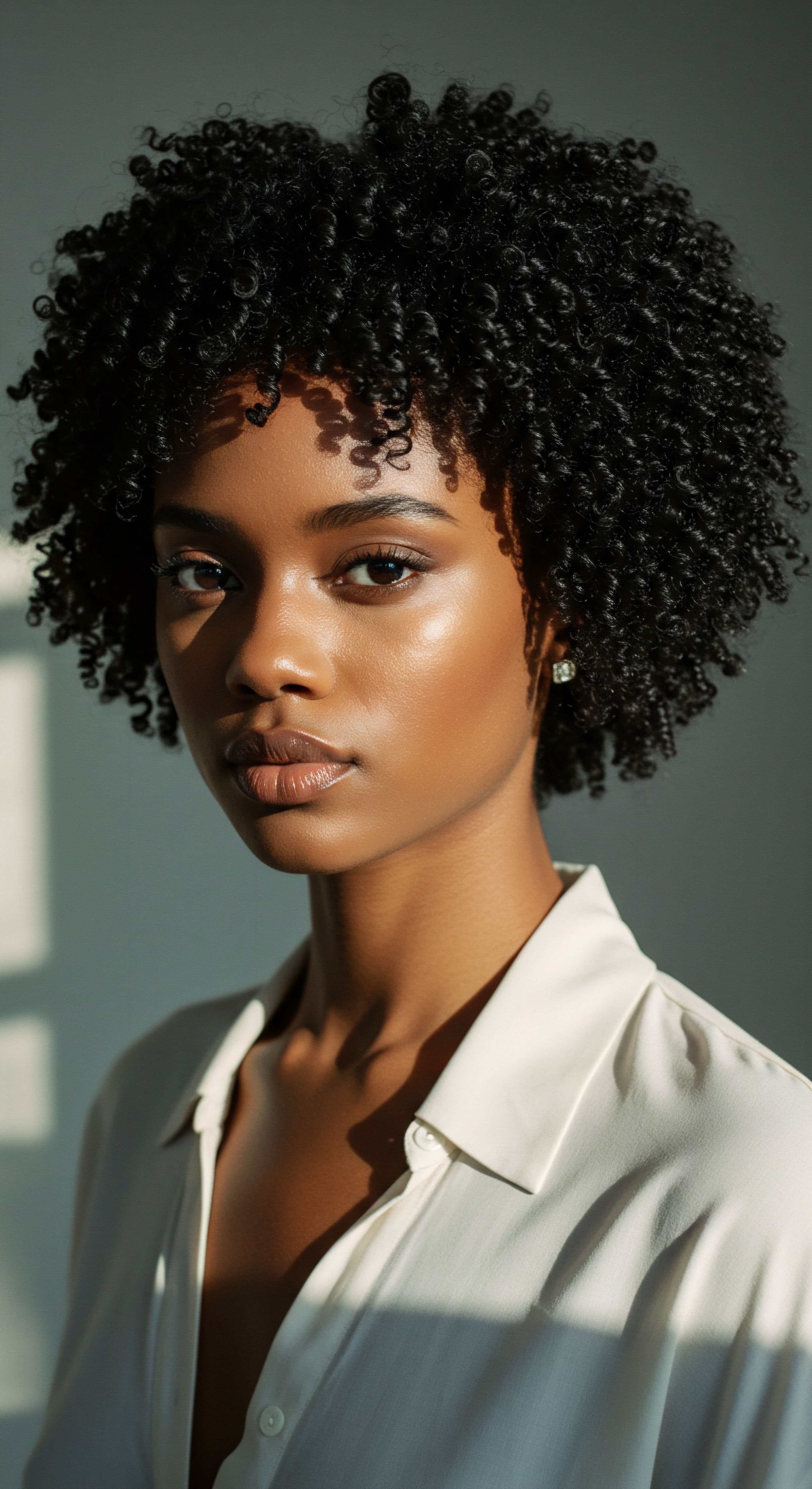
How Did Hair Care Reflect Social Status and Health?
Hair, and its meticulous care, served as a powerful visual cue for social standing in ancient Egypt. Elaborate hairstyles and high-quality wigs were often symbols of wealth and status, reserved for the elite. The complexity of a wig or the maintenance required for a particular natural style conveyed not only personal dedication but also the resources available to the individual, including access to skilled hairdressers and expensive ingredients.
Beyond aesthetics, hair care was intrinsically tied to health and hygiene. In a climate prone to dust and parasites, cleanliness was paramount. Shaving the head, a common practice for priests and some segments of the population, was an effective method of preventing lice.
However, for those who maintained natural hair or wore wigs, treatments were essential. The Ebers Papyrus, an ancient medical text dating to around 1550 BC, contains early remedies for various ailments, including suggestions for addressing head lice.
Ancient Egyptians employed aromatic formulas for lice, often comprising a mixture of water, vinegar, and essential oils like cinnamon, rosemary, and terebinth. These concoctions, combined with the use of fine-tooth combs, demonstrate an early, practical approach to managing common hygienic challenges. The fact that Cleopatra herself was reportedly buried with solid gold lice combs underscores that even royalty contended with these issues and valued the tools for their resolution. This practical dimension of hair care, aimed at preserving health and comfort, highlights the interconnectedness of beauty and well-being in their worldview.
- Wigs ❉ Served as a primary means of elaborate styling, protection from sun, and hygiene, often made from human hair, plant fibers, or wool.
- Combs ❉ Essential tools, crafted from materials like ivory or wood, used for styling, detangling, and applying products.
- Henna ❉ A natural dye and conditioner, imparting reddish hues and strengthening hair, used for both aesthetic and practical purposes.
The ancient Egyptians’ approach to hair was a testament to their resourcefulness and their deep respect for presentation. They understood that what was applied to the hair, and how the hair was styled, communicated much about an individual. This cultural depth transforms our understanding of their “products” from simple substances into meaningful elements of a rich and vibrant civilization.

Reflection
The journey through ancient Egyptian hair products ultimately leads us to a quiet appreciation for the timeless pursuit of well-being and expression. Their ingenious use of the natural world, from desert minerals to riverine botanicals, speaks to a profound connection with their environment, a lesson that gently echoes into our contemporary understanding of self-care. The enduring power of these ancient practices, still resonating in some modern natural hair regimens, reminds us that the quest for healthy, celebrated strands is a continuous, beautiful story.

References
- McCreesh, N. C. Gize, A. P. & David, A. R. (2011). Ancient Egyptian hair gel ❉ New insight into ancient Egyptian mummification procedures through chemical analysis. Journal of Archaeological Science, 38(12), 3432-3434.
- Riggs, Christina. (2014). Unwrapping Ancient Egypt. Bloomsbury Academic.
- Shaw, Ian, & Nicholson, Paul. (2000). Ancient Egyptian Materials and Technology. Cambridge University Press.
- Manniche, Lise. (1999). Music and Medicine in Ancient Egypt. British Museum Press.
- Lucas, Alfred. (1962). Ancient Egyptian Materials and Industries. Edward Arnold Publishers.
- Germer, Renate. (1985). Flora des Alten Ägypten. Philipp von Zabern.
- David, Ann Rosalie. (2008). Handbook to Life in Ancient Egypt. Facts On File.
- Brewer, Douglas J. & Teeter, Emily. (2007). Egypt and the Egyptians. Cambridge University Press.
- Wilkinson, Richard H. (1992). Reading Egyptian Art ❉ A Hieroglyphic Guide to Ancient Egyptian Painting and Sculpture. Thames & Hudson.
- Robins, Gay. (1997). The Art of Ancient Egypt. Harvard University Press.